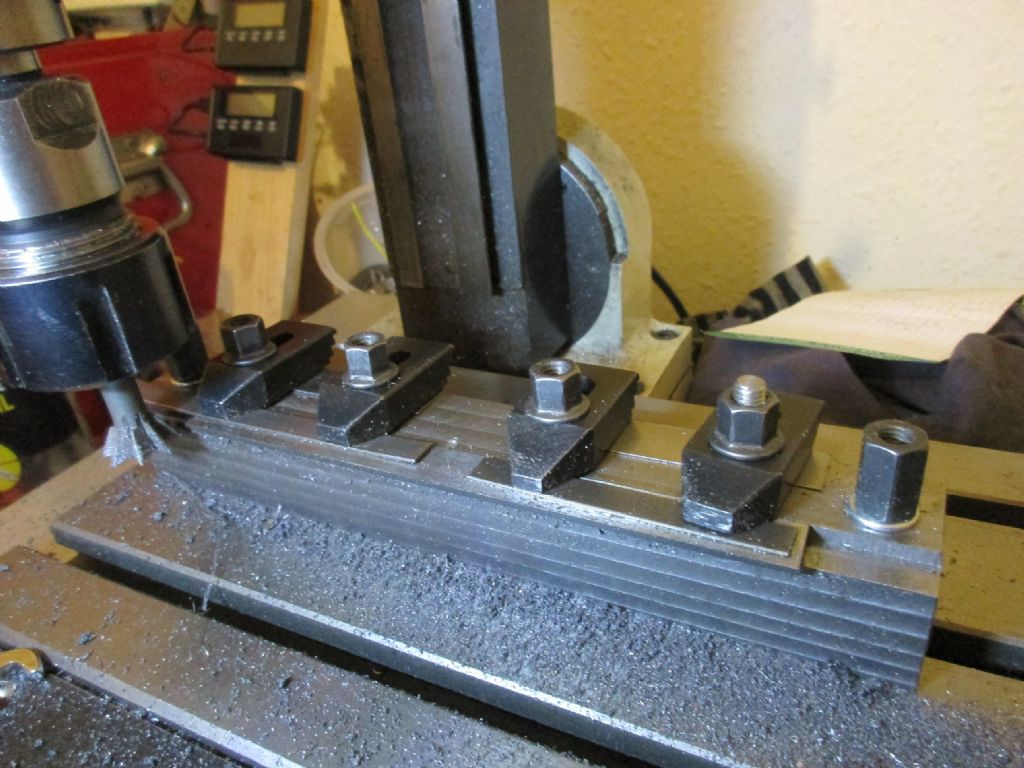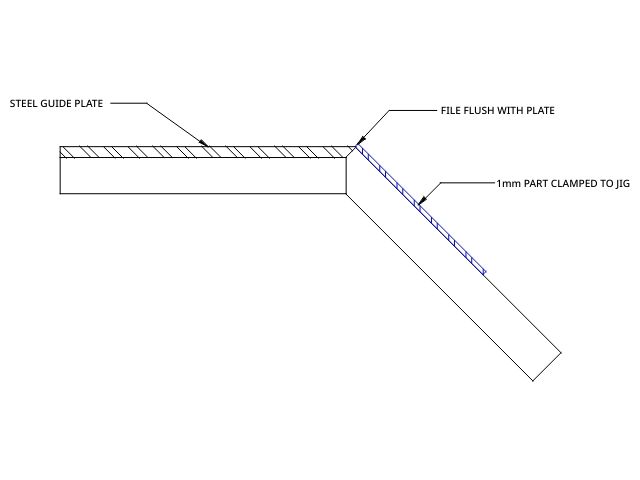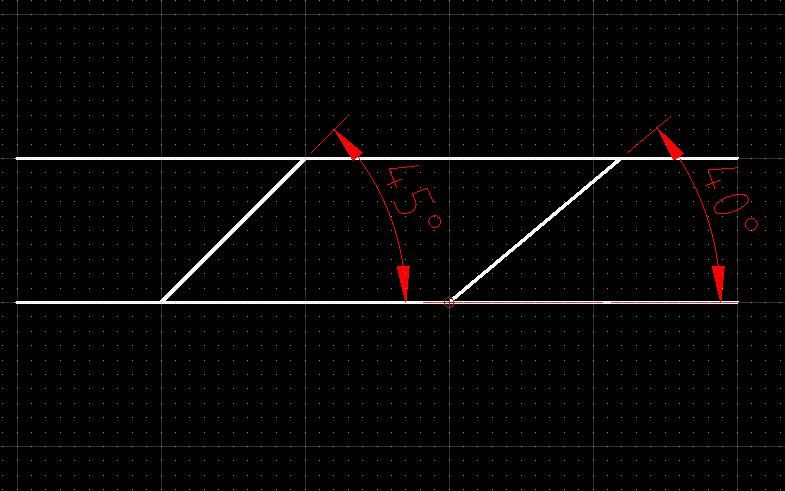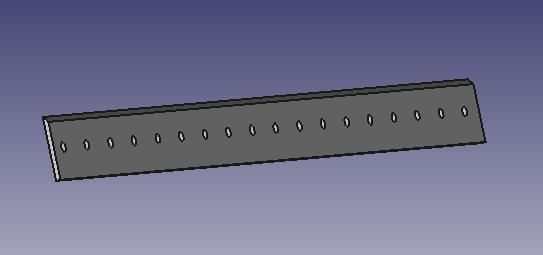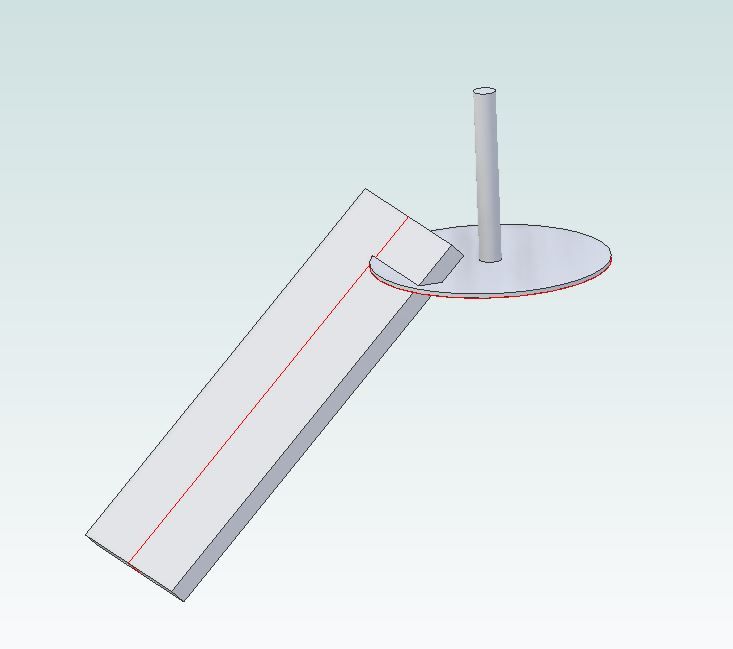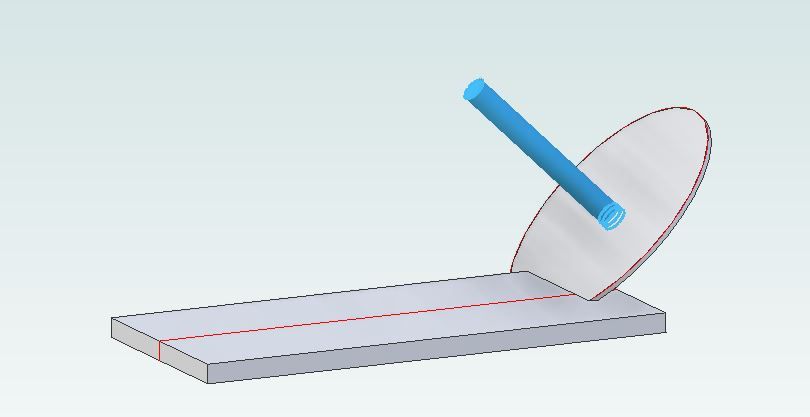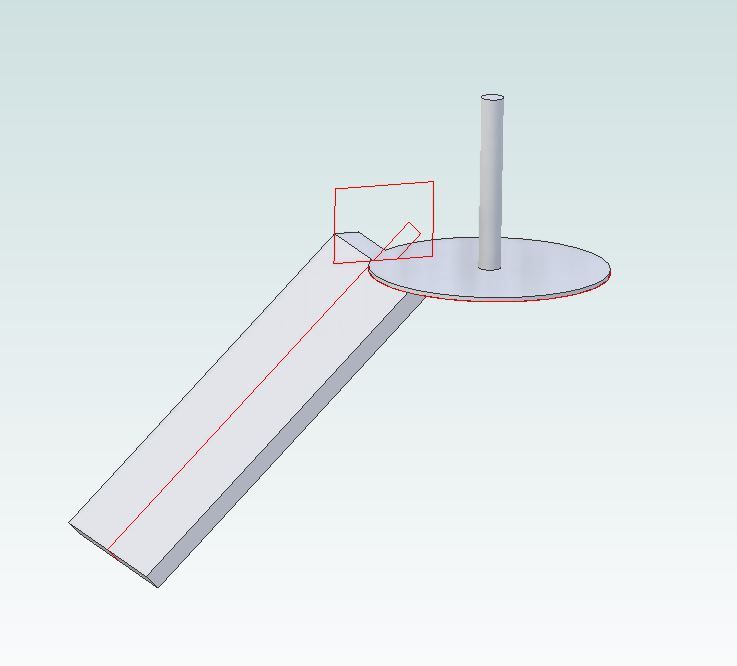Few thoughts, first, the more information about the requirement the better. Engineers are tortured by customers wanting to implement their solution, however impractical, rather than allowing the expert to suggest better ways of doing it. Secret specifications are particularly evil, because it's so easy to make simple jobs difficult by accident. Putting it another way, be careful what you ask for!
In John's specification, it may be there's no need to put a difficult to make accurate 45° chamfer on the strip. If John's requirement is for two parts to butt together accurately, it's only necessary for them to be chamfered at the same angle which is much easier to do.
In the drawing below, both 45° and 40° chamfers butt equally well.

My approach, ideally with a milling machine, and I think a Proxxon or Sherline would do, would be to mount a long strip of metal flat and drill a sequence of hole pairs spaced 20mm along the strip, widely spaced to allow crude sawing. Then I'd mount the strip in a jig at about 45° and run an end mill along the top tilted edge, thus producing a strip long enough to make several pairs all with the same chamfer, and therefore able to mate accurately.

The parts can be separated with a hacksaw and then tidied to size by milling or filing. In both cases I'd make another jig to hold several pairs together in a stack by bolting them through the holes, thus letting me square the side edges to the required dimensions in groups, not one at a time.
The limitation of the approach is pairs have to come from the same strip unless an angle jig is made to guarantee a repeatable chamfer. If 45° really is essential, same basic approach except much more effort goes into making an accurate jig.
Although a milling machine considerably simplifies the job, it could all be done by hand, creating the chamfer by carefully filing down to the edge of the jig, and centre popping the holes. Hand would be cheaper, but don't underestimate the amount of practice needed to do the job accurately. I'm too clumsy and impatient to do good work with hand tools!
Dave
Edited By SillyOldDuffer on 23/03/2021 20:13:19
 JasonB.
JasonB.

